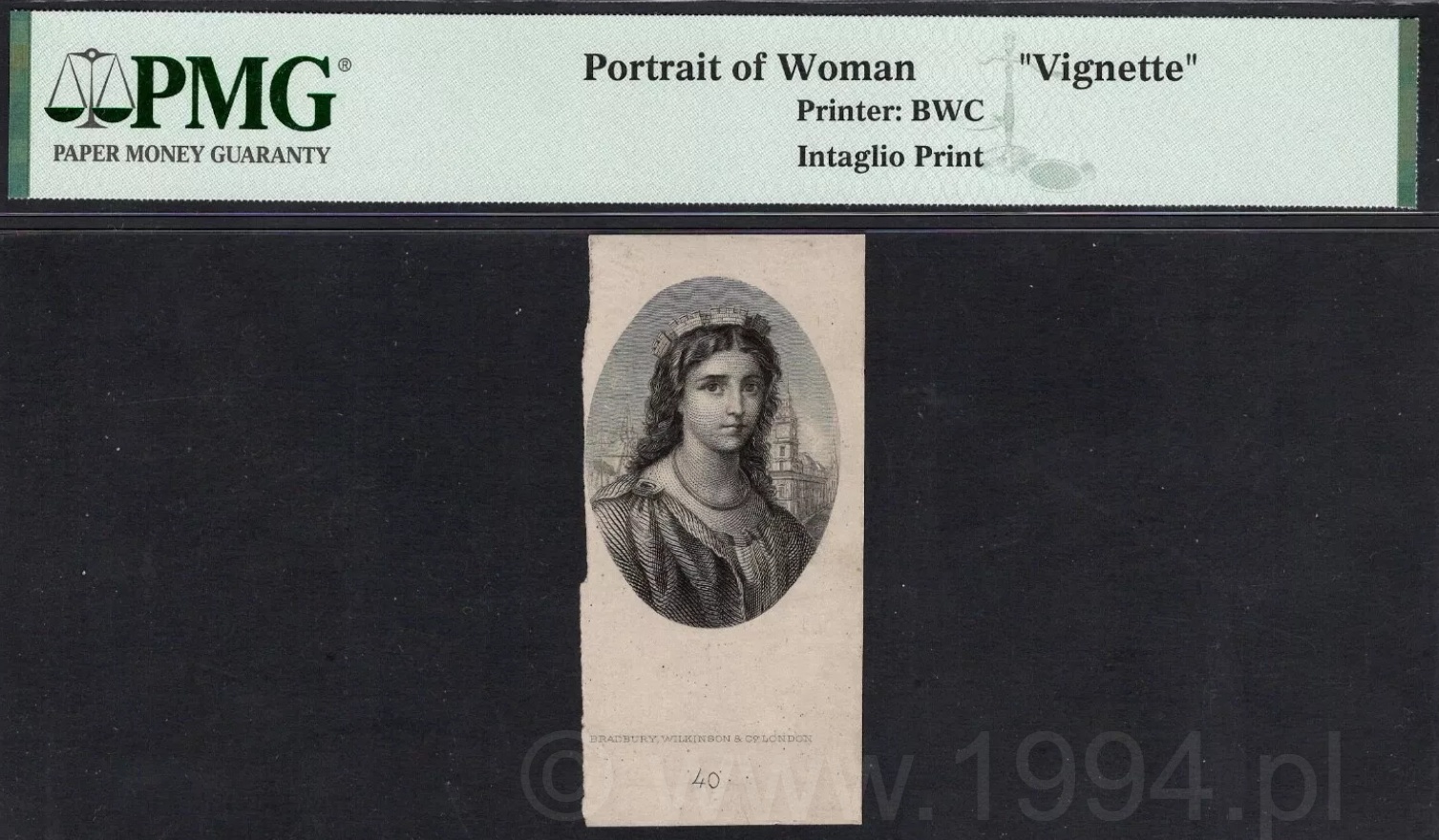Description and research notes
Original Bradbury, Wilkinson & Co. portrait vignette, pulled as an intaglio proof from the firm’s London steel plate to demonstrate the finished facial study later integrated into Australian private-issue layouts, notably the City of Melbourne Bank £20. Such stand-alone vignettes were the building blocks of Victorian banknote design: engraved once to perfection, then reused, resized, or re-tinted across denominations and clients.
The artistry is pure late-Victorian classicism: a three-quarter pose with soft mezzotint-like modeling, intricate hair treatment, and micro-hatching transitions that fade into the paper to avoid a hard edge when nested inside guilloché. The proof impression reveals the plate’s full tonal range—crisp keylines, feathered mid-tones, and luminous highlights—exactly as the engraver intended before tint stones and text were assembled around it.
Educationally, this vignette is a masterclass in modular banknote production. In the Bradbury Wilkinson workflow, portraits, ornaments, lathe-work, and letterforms were created as discrete elements, archived, and recomposed for clients from Melbourne to Dunedin. Studying the portrait in isolation allows precise analysis of burin direction, cross-hatch densities, and the subtle stipple overlays that give the sitter a lifelike presence once transferred to the final note.
As a companion to the City of Melbourne Bank £20 specimen, this proof documents the engraving source behind the note’s human focal point. Together, the pair demonstrates how London’s plate libraries shaped the visual identity of Australia’s private banks and why original vignettes are indispensable to reconstructing printer practices and attribution across the Commonwealth.
